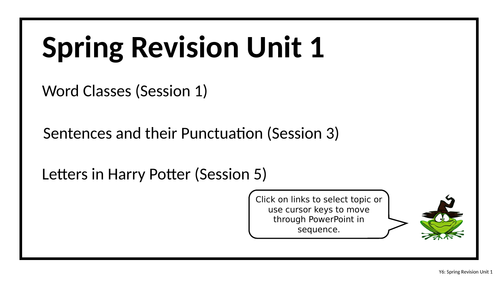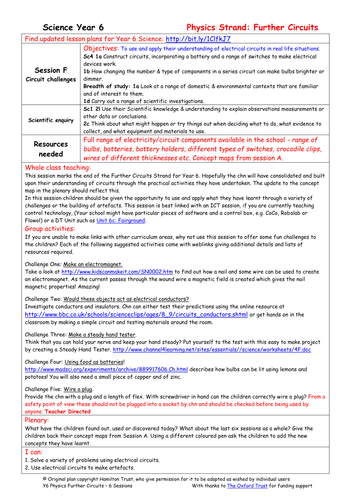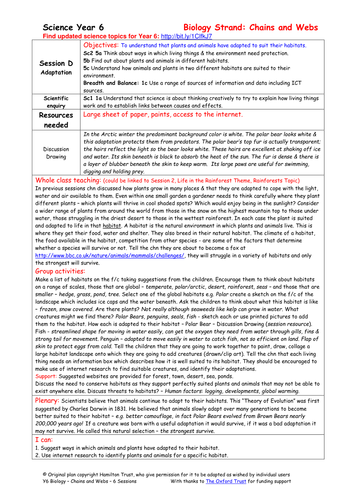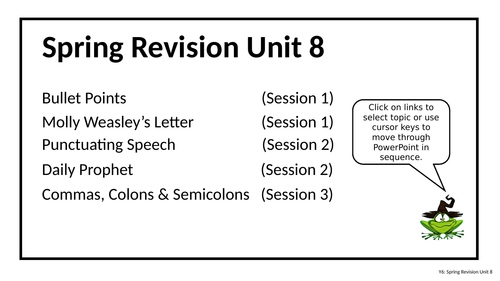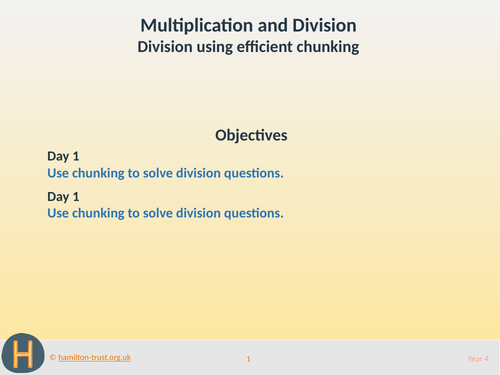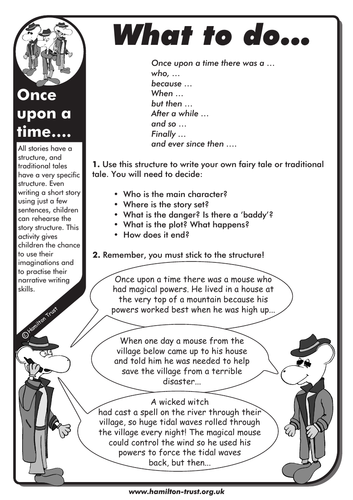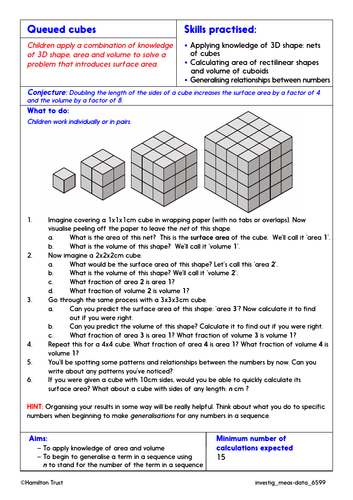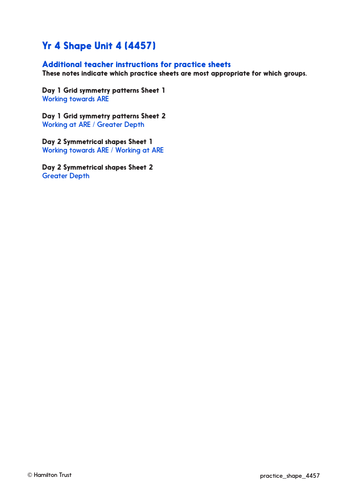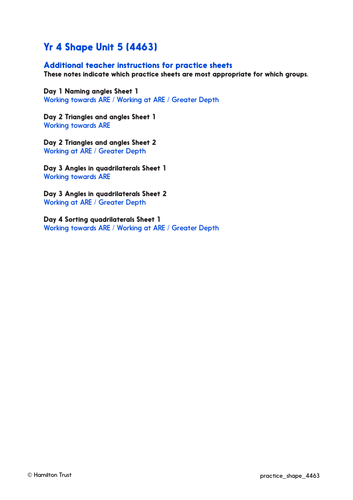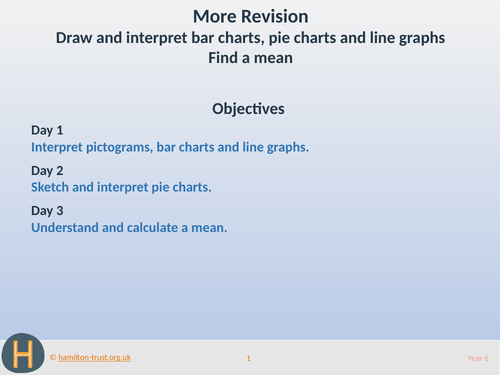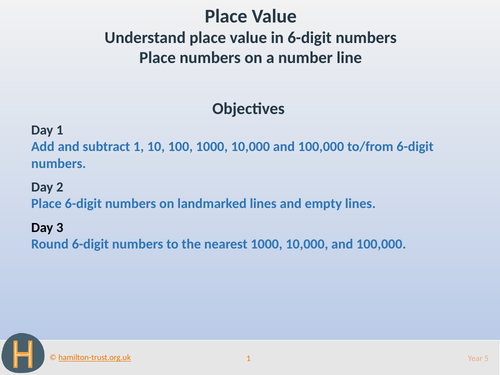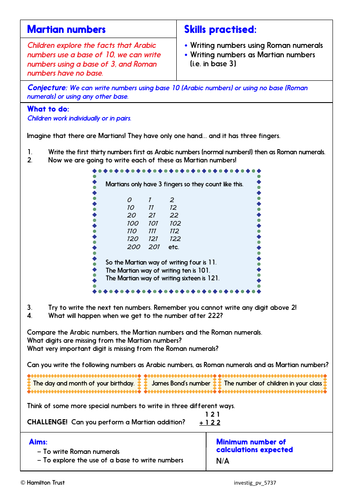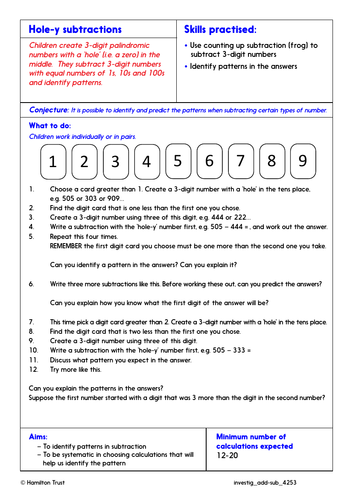
3k+Uploads
9988k+Views
11603k+Downloads

Circuit challenges
In this session children apply their knowledge and understanding of circuits in other subject areas or through a variety of practical challenges. Iron nails, lemons and the steadiest of hands are needed in this session!
Suitable for Y6 pupils.

Adaptation
Did you know that Polar Bears don’t actually have white fur? But what they do have are many other adaptations that make them well suited to the Polar habitat. Children identify how other creatures have adapted to their habitat. Suitable for Y6 pupils.

Family Food
Consider where the food that we eat comes from. Grown at home, locally or in another country? Discuss food miles. Who does the shopping, cooking, washing up? Where does the water come from? Cook a meal/dish and write the recipe to send to your link school. Suitable for years 5 and 6.

Problem-Solving Investigation: Temperature and negative numbers. (Year 5 Measures and Data)
Year 5 Measures and Data: Understand the concept of temperature and relate to negative numbers.
This in-depth Maths Investigation will develop maths meta-skills, and enable children to learn to think mathematically and articulate mathematical ideas.
In-depth Investigation: Alternating Chains
Children create chains of alternating positive and negative numbers and explore the patterns in their totals.
This problem-solving investigation is part of our Year 5 Measures and Data block. Each Hamilton maths block contains a complete set of planning and resources to teach a terms worth of objectives for one of the National Curriculum for England’s maths areas.

Practice Worksheets: Mixed numbers and fractions of amounts. (Year 5 Decimals and Fractions)
Year 5 Decimals and Fractions: Mixed numbers and fractions of amounts.
Procedural fluency Practice Worksheets to achieve maths mastery. Differentiated for children working towards Age Related Expectations (ARE), at ARE and at greater depth.
Day 1
Write improper fractions as mixed numbers and vice versa using images of pizzas.
Day 2
Find non-unit fractions of amounts.
These procedural fluency practice sheets are part of our Year 5 Decimals and Fractions block. Each Hamilton maths block contains a complete set of planning and resources to teach a terms worth of objectives for one of the National Curriculum for England’s maths areas.

Practice Worksheets: Place 6-digit numbers on a line; round (Year 5 Place Value)
Year 5 Place Value: Place value in 6-digit numbers. Placing on a line and rounding.
Procedural fluency Practice Worksheets to achieve maths mastery. Differentiated for children working towards Age Related Expectations (ARE), at ARE and at greater depth.
Day 1
Write 6-digit numbers with digits of given values.
Write missing digits in numbers to create ascending/descending list of 6-digit numbers.
Day 2
Add/subtract 1, 10, 100, 1000, 10,000 and 100,000; preserve inequalities.
Day 3
Place 6-digit numbers on lines and round to the nearest 100 or 1000.
These procedural fluency practice sheets are part of our Year 5 Place Value block. Each Hamilton maths block contains a complete set of planning and resources to teach a terms worth of objectives for one of the National Curriculum for England’s maths areas.

Year 6 - Harry Potter themed SATs revision plans - Unit 8 - Newspapers and dialogue
Six revision sessions using Prisoner of Azkaban & Goblet of Fire.
Using Harry Potter and the Goblet of Fire, children explore newspaper writing, roleplay interviews with Rita Skeeter, and consider accuracy in news reporting. Revise dialogue/reported speech; colons, semi colons, commas, bullet points.
Includes:
teaching plan for 6 sessions
teaching resources and answers
SPAG revision presentation
5-minute SPAG revision presentation
Mock Grammar, Punctuation and Spelling test papers and answers
Session 1 - Share Molly Weasley’s letter and a film clip of the build-up to the match. Ask how people might find out about the match - news reports. Introduce this week’s text focus. Read newspaper texts from Harry Potter and pick out features. Spelling homework: homophones and other words often confused.
Session 2 - Tell children that the Dark Mark being cast is a ‘newsworthy’ event which might be reported in different ways. Discuss point of view. Recognise that quotations are direct speech. Revise and then write direct and reported speech and punctuate correctly.
Session 3 - Introduce the Triwizard Tournament. Share extract. Revise commas, colons and semi-colons using slide presentation. Provide exercises separated by topic: commas, and then colons and semi-colons. Children work through one or more activities.
Session 4 - Show reports – what did eyewitnesses say? – quotes, punctuated as direct speech. Look at examples. Speech is often less formal than written language. Children pick a champion to interview and generate questions for Skeeter. Take turns to role-play, making notes. Punctuate answers as direct speech.
Session 5 - Rita writes several articles about Harry; each report twists the facts. Let’s take a closer look at some of them. Provide extracts and test-style questions. Children discuss and record or work on their own. They provide reasons as required and explain the meaning of words in context.
Session 6 - Today children become reporters for the Daily Prophet. They write a report on the second trial of the Triwizard Tournament. Distribute Press Release and look at the information and then decide on a format for notes – timeline, list, boxes etc. Children write a report drawing on grammatical features.
SPAG Revision
Revise the use of bullet points and the punctuation of dialogue. Examine the correct way to use commas, semi-colons and colons. Revise the features of newspaper reports and reported speech.
This unit is part of a larger block of Harry Potter themed revision plans that cover all of the required revision for the Year 6 English SATs, including the SPAG.

Teaching Presentation: Division using efficient chunking (Year 4 Multiplication and Division)
This presentation provides two days of teaching that cover the objectives:
Division using efficient chunking
It includes starter activities, whole class teaching, group activities, practice sheets and mastery questions. It can be used on a variety of interactive whiteboards.
Day 1 Teaching
Write 96 ÷ 6 and read it, reminding children that it asks us how many 6s in 96? Draw an empty number line and model finding 10 lots of 6 and then 6 lots (see download).
Point out that 10 + 6 is 16 so we know there are 16 lots of 6 in 96. Ask children to show 78 ÷ 6 and 72 ÷ 4.
Day 2 Teaching
Show the posters made yesterday. Ask children to share how we use a number line to help us divide. First, we find 10 times the divisor, then we work out how many more lots we need. Model 102 ÷ 6 as 10 × 6 and 7 × 6 on a number line. Repeat for 72 ÷ 4 and 54 ÷ 3.
This teaching is part of Hamilton’s Year 4 Multiplication and Division block. Each Hamilton maths block contains a complete set of planning and resources to teach a term’s worth of objectives for one of the National Curriculum for England’s maths areas.

Once upon a time - English Homework - UKS2
English Homework activity for UKS2:
Use imagination and narrative writing skills to write their own fairy or traditional tale using the structure provided.
Looking for English planning? Using high quality texts as a starting point, our creative and stimulating English plans incorporate grammar teaching in context and offer meaningful writing opportunities. Find out more at Hamilton Trust.

Strategies in mental and written calculation - Practice Worksheets & Answers- Year 6
Year 6 Place Value, Addition and Subtraction: Informal methods of mental and written calculation.
Procedural fluency practice worksheets to achieve maths mastery. Differentiated for children working towards Age Related Expectations (ARE), at ARE and at greater depth. Includes answers.
Day 1 - Mental addition and subtraction worksheet practice.
Day 2 - Bank Holiday leisure costs, calculating total costs and change.
These procedural fluency practice sheets are part of our Year 6 Place Value, Addition and Subtraction block. Each Hamilton maths block contains a complete set of planning and resources to teach a term’s worth of objectives for one of the National Curriculum for England’s maths areas.

Calculate volumes of cubes/cuboids - Problem-Solving Investigation - Year 6
This in-depth maths investigation is an open-ended problem solving activity for Year 6 children. It can be used to support teaching towards the objective: calculate volumes of cubes and cuboids.
In-depth Investigation: Queued Cubes
Children apply a combination of knowledge of 3-D shape, area and volume to solve a problem that introduces surface area.
This investigation will develop maths meta-skills, support open-ended questioning and logical reasoning, and enable children to learn to think mathematically and articulate mathematical ideas.
This problem-solving investigation is part of our Year 6 Measures and Data block. Each Hamilton maths block contains a complete set of planning and resources to teach a term’s worth of objectives for one of the National Curriculum for England’s maths areas.

Unit and non-unit fraction problems - Problem-Solving Investigation - Year 5
This in-depth maths investigation is an open-ended problem solving activity for Year 5 children. It can be used to support teaching towards the objectives finding an equivalent fraction to non-unit fractions and adding fractions with related denominators.
In-depth Investigation: Big triangle of fractions
Children add fractions with related denominators and find equivalent fractions to identify patterns.
This investigation will develop maths meta-skills, support open-ended questioning and logical reasoning, and enable children to learn to think mathematically and articulate mathematical ideas.
This problem-solving investigation is part of our Year 5 Decimals and Fractions block. Each Hamilton maths block contains a complete set of planning and resources to teach a term’s worth of objectives for one of the National Curriculum for England’s maths areas.

Line of symmetry: identify and construct - Teaching Presentation - Year 4
This presentation provides two days of teaching that cover the objectives:
Complete symmetrical shapes and patterns across a line of symmetry.
Complete shapes and patterns with a line of symmetry.
It includes starter activities, whole class teaching, group activities, practice sheets and mastery questions. It can be used on a variety of interactive whiteboards.
Day 1 Teaching
Display a pattern drawn on one side of a line of symmetry (see resources). Discuss the concept of ‘line of symmetry’ and begin to complete each pattern. Provide copies for children who complete each symmetrical pattern. Children create their own symmetrical patterns, colouring just 12 squares lines of symmetry.
Day 2 Teaching
Draw an irregular but symmetrical hexagon. Ask children to say whether it has a line of symmetry. Then draw half of an irregular but symmetrical octagon. Children need to draw the other half. Discuss shapes with two lines of symmetry and draw one, identifying the two lines. Model how to use a mirror to check for symmetry, perhaps using the Symmetry ITP.
This teaching is part of Hamilton’s Year 4 Shape block. Each Hamilton maths block contains a complete set of planning and resources to teach a term’s worth of objectives for one of the National Curriculum for England’s maths areas.

Line of symmetry: identify and construct - Practice Worksheets & Answers - Year 4
Year 4 Shape: Identify a line of symmetry; complete shapes with respect to this.
Procedural fluency practice worksheets to achieve maths mastery. Differentiated for children working towards Age Related Expectations (ARE), at ARE and at greater depth. Includes answers.
Day 1 - Complete patterns across one or two lines of symmetry.
Day 2 - Complete drawings of 2-D shapes to make them symmetrical.
These procedural fluency practice sheets are part of our Year 4 Shape block. Each Hamilton maths block contains a complete set of planning and resources to teach a term’s worth of objectives for one of the National Curriculum for England’s maths areas.

Angle types; properties of polygons - Practice Worksheets & Answers - Year 4
Year 4 Shape: Identify types of angle; use these in exploring properties of polygons.
Procedural fluency practice worksheets to achieve maths mastery. Differentiated for children working towards Age Related Expectations (ARE), at ARE and at greater depth. Includes answers.
Day 1 - Compare and order angles, and identify if they are acute or obtuse.
Day 2 - Identify acute, obtuse and right angles in triangles.
Day 3 - Identify acute, obtuse and right angles in quadrilaterals.
Day 4 - Sort quadrilaterals into Venn diagrams based on their properties.
These procedural fluency practice sheets are part of our Year 4 Shape block. Each Hamilton maths block contains a complete set of planning and resources to teach a term’s worth of objectives for one of the National Curriculum for England’s maths areas.

Bar charts, pie charts, line graphs, means - Teaching Presentation - Year 6
This presentation provides three days of teaching that cover the objectives:
Interpret pictograms, bar charts and line graphs.
Sketch and interpret pie charts.
Understand and calculate a mean.
It includes starter activities, whole class teaching, group activities, practice sheets and mastery questions. It can be used on a variety of interactive whiteboards.
Day 1 Teaching
Show and explain the graph of pets. How many children chose a rabbit? Discuss the scale of the graph. Draw a line down to the horizontal axis, and label it 50. Repeat with similar questions. Share today’s top tip. Show a line graph of a dog’s growth in weight over time and ask questions, including intermediate points.
Day 2 Teaching
Show children the graph of pets from day 1. Label each bar with the numbers: 50, 150 and 100. How many children were surveyed in total? 50 out of 300 children chose a rabbit, what fraction is this? (1/6). What fraction chose a dog? (1/2). What fraction chose a cat? (1/3). Children sketch a pie chart to show the results.
Day 3 Teaching
Remind children what the word average means and how the mean is one type of average. A sprinter ran 100m in times of 12s, 15s, 13s, and 16s; then calculated her mean time to be 18s. Does this sound right? Share today’s top tip for tests. Children add the 4 times together and divide by 4 to find her mean time. Take feedback. Challenge children to write three different numbers with a mean of 10.
This teaching is part of Hamilton’s Year 6 More Revision block. Each Hamilton maths block contains a complete set of planning and resources to teach a term’s worth of objectives for one of the National Curriculum for England’s maths areas

Place value in 6-digit numbers - Teaching Presentation - Year 5
This presentation provides three days of teaching that cover the objectives:
Add and subtract 1, 10, 100, 1000, 10,000 and 100,000 to/from 6-digit numbers.
Place 6-digit numbers on landmarked lines and empty lines.
Round 6-digit numbers to the nearest 1000, 10,000, and 100,000.
It includes starter activities, whole class teaching, group activities, practice sheets and mastery questions. It can be used on a variety of interactive whiteboards.
Day 1 Teaching
Write 457,849. In pairs, one child writes the number 1 less, and the other child writes the number 1 more. Repeat with 10 more/less, 100 more/less, 1000 more/less, 10,000 more/less and 100,000 more/less. Then repeat with 230,193 then 352,605.
Day 2 Teaching
Show a 0 to 1,000,000 line marked in multiples of 100,000. Choose numbers to mark so that children have to identify and label. Then ask one child to mark a number. The rest of the class guess it, asking careful questions. Children repeat with a partner to place numbers on a 100,000 to 200,000 line. Repeat for groups of numbers, using a number line bounded by appropriate adjacent multiples of 100,000.
Day 3 Teaching
Sketch a line from 200,000 to 300,000. Mark a number, then ‘zoom in’ and draw a line to show that number between two multiples of 10,000. Repeat for two multiples of 1000. Round to nearest 100,000, 10,000 and 1000. Repeat with a new child and a line between 500,000 and 600,000. Then play ‘100k Bingo.’
This teaching is part of Hamilton’s Year 5 Place Value block. Each Hamilton maths block contains a complete set of planning and resources to teach a term’s worth of objectives for one of the National Curriculum for England’s maths areas.

Identify and write Roman numerals - Problem-Solving Investigation - Year 5
This in-depth maths investigation is an open-ended problem solving activity for Year 5 children. It can be used to support teaching towards the objectives: Identify and write Roman numerals.
In-depth Investigation: Martian Numbers
Children explore the fact that Hindu-Arabic numbers use a base of 10, we can write numbers using a base of 3, and Roman numbers have no base.
This investigation will develop maths meta-skills, support open-ended questioning and logical reasoning, and enable children to learn to think mathematically and articulate mathematical ideas.
This problem-solving investigation is part of our Year 5 Place Value block. Each Hamilton maths block contains a complete set of planning and resources to teach a term’s worth of objectives for one of the National Curriculum for England’s maths areas.

Problem-Solving Investigation: Count to 20. (Year 1 Place Value)
Year 1 Place Value: Partition teen numbers; compare numbers to 20.
This in-depth Maths Investigation will develop maths meta-skills, and enable children to learn to think mathematically and articulate mathematical ideas.
In-depth Investigation: Fill in the Box
Children fill a matchbox with items and count them accurately.
This problem-solving investigation is part of our Year 1 Place Value block. Hamilton’s maths blocks present everything you need to teach a term’s worth of each required maths area together in one place.

Problem-Solving Investigation: Written subtraction (Year 4 Addition and Subtraction)
Year 4 Addition and Subtraction: Written subtraction
This in-depth maths investigation will develop maths meta-skills, and enable children to learn to think mathematically and articulate mathematical ideas.
In-depth Investigation: Hole-y Subtractions
Children create 3-digit palindromic numbers with a ‘hole’ (i.e. a zero) in the middle. They subtract 3-digit numbers with equal numbers of 1s, 10s and 100s and identify patterns in their answers.
This problem-solving investigation is part of our Year 4 Addition and Subtraction block. Each Hamilton maths block contains a complete set of planning and resources to teach a terms worth of objectives for one of the National Curriculum for England’s maths areas.

